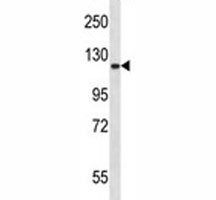Cookie preferences
This website uses cookies, which are necessary for the technical operation of the website and are always set. Other cookies, which increase the comfort when using this website, are used for direct advertising or to facilitate interaction with other websites and social networks, are only set with your consent.
Configuration
Technically required
These cookies are necessary for the basic functions of the shop.
"Allow all cookies" cookie
"Decline all cookies" cookie
CSRF token
Cookie preferences
Currency change
Customer-specific caching
FACT-Finder tracking
Individual prices
Selected shop
Session
Comfort functions
These cookies are used to make the shopping experience even more appealing, for example for the recognition of the visitor.
Note
Show the facebook fanpage in the right blod sidebar
Statistics & Tracking
Affiliate program
Conversion and usertracking via Google Tag Manager
Track device being used

| Item number | Size | Datasheet | Manual | SDS | Delivery time | Quantity | Price |
|---|---|---|---|---|---|---|---|
| NSJ-F44011-0.08ML | 80 µl | - | - |
3 - 10 business days* |
326.00€
|
||
| NSJ-F44011-0.4ML | 400 µl | - | - |
3 - 10 business days* |
702.00€
|
If you have any questions, please use our Contact Form.
You can also order by e-mail: info@biomol.com
Larger quantity required? Request bulk
You can also order by e-mail: info@biomol.com
Larger quantity required? Request bulk
In 1X PBS, pH 7.4, with 0.09% sodium azide. Receptor for members of the ephrin-A family. Binds to... more
Product information "Anti-Epha2"
In 1X PBS, pH 7.4, with 0.09% sodium azide. Receptor for members of the ephrin-A family. Binds to ephrin-A1, -A3, -A4 and -A5. Induces apoptosis in a TP53/p53-independent, caspase-8-dependent manner (By similarity). Plays an important role in angiogenesis and tumor neovascularization. The recruitement of VAV2, VAV3 and PI3-kinase p85 subunit by phosphorylated EPHA2 is critical for EFNA1-induced RAC1 GTPase activation and vascular endothelial cell migration and assembly. May function in distinctive aspects of pattern formation and subsequently in development of several fetal tissues. May be involved in cell-cell interactions guiding early hindbrain development. Protein function: Receptor tyrosine kinase which binds promiscuously membrane-bound ephrin-A family ligands residing on adjacent cells, leading to contact-dependent bidirectional signaling into neighboring cells. The signaling pathway downstream of the receptor is referred to as forward signaling while the signaling pathway downstream of the ephrin ligand is referred to as reverse signaling. Activated by the ligand ephrin-A1/EFNA1 regulates migration, integrin-mediated adhesion, proliferation and differentiation of cells. Regulates cell adhesion and differentiation through DSG1/desmoglein-1 and inhibition of the ERK1/ERK2 signaling pathway. May also participate in UV radiation- induced apoptosis and have a ligand-independent stimulatory effect on chemotactic cell migration. During development, may function in distinctive aspects of pattern formation and subsequently in development of several fetal tissues. Involved for instance in angiogenesis, in early hindbrain development and epithelial proliferation and branching morphogenesis during mammary gland development. Engaged by the ligand ephrin-A5/EFNA5 may regulate lens fiber cells shape and interactions and be important for lens transparency development and maintenance. With ephrin-A2/EFNA2 may play a role in bone remodeling through regulation of osteoclastogenesis and osteoblastogenesis. [The UniProt Consortium]
| Keywords: | Anti-Eck, Anti-Epha2, EC=2.7.10.1, Anti-Epithelial cell kinase, Anti-Ephrin type-A receptor 2, Anti-Tyrosine-protein kinase receptor ECK, Anti-Tyrosine-protein kinase receptor SEK-2, Anti-Tyrosine-protein kinase receptor MPK-5, Epha2 Antibody |
| Supplier: | NSJ Bioreagents |
| Supplier-Nr: | F44011 |
Properties
| Application: | WB, ELISA |
| Antibody Type: | Polyclonal |
| Conjugate: | No |
| Host: | Rabbit |
| Species reactivity: | mouse |
| Immunogen: | A portion of amino acids 296-323 from the mouse protein was used as the immunogen for this Epha2 antibody. |
| Format: | Purified |
Database Information
| KEGG ID : | K05103 | Matching products |
| UniProt ID : | Q03145 | Matching products |
| Gene ID | GeneID 13836 | Matching products |
Handling & Safety
| Storage: | -20°C |
| Shipping: | +4°C (International: +4°C) |
Caution
Our products are for laboratory research use only: Not for administration to humans!
Our products are for laboratory research use only: Not for administration to humans!
Information about the product reference will follow.
more
You will get a certificate here
Viewed



